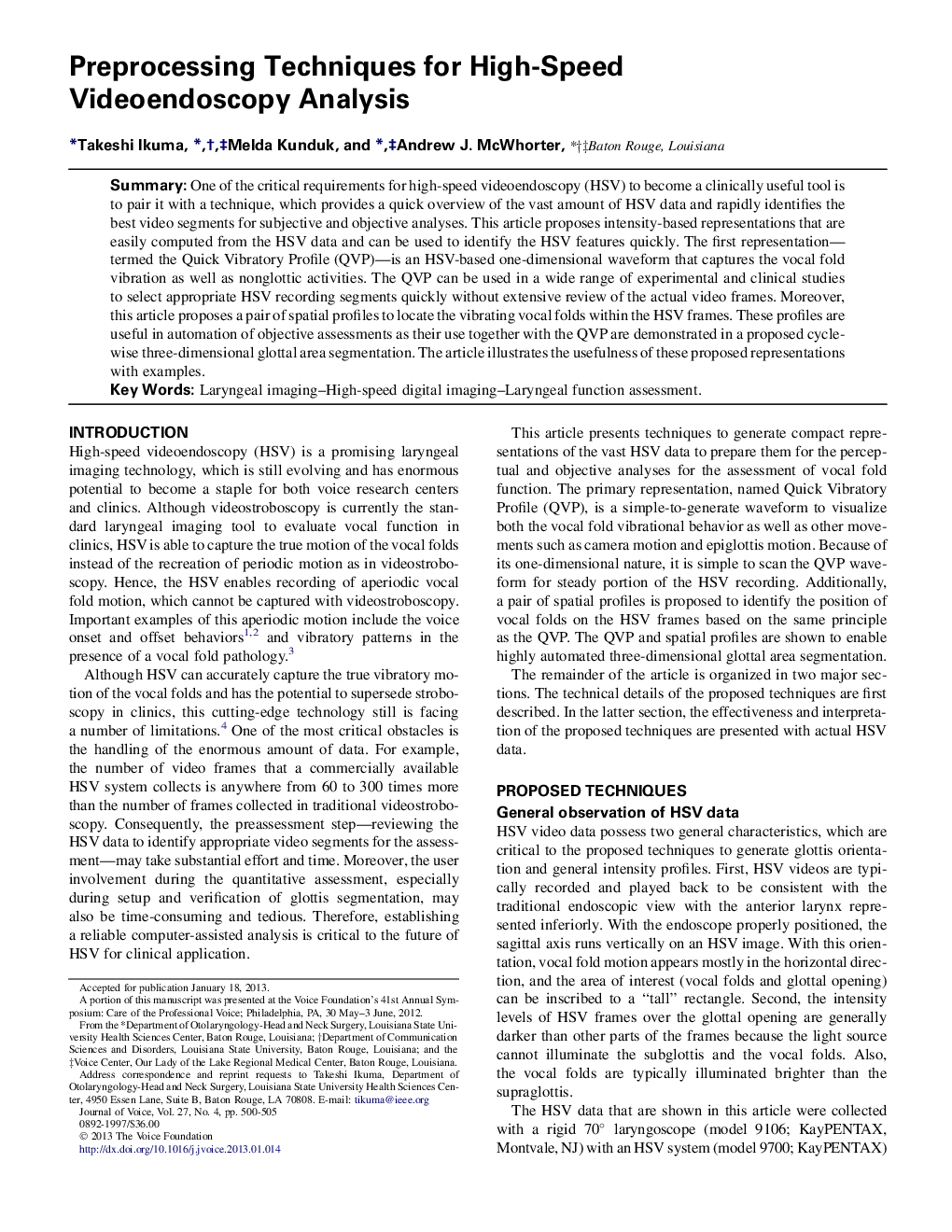| Article ID | Journal | Published Year | Pages | File Type |
|---|---|---|---|---|
| 1102115 | Journal of Voice | 2013 | 6 Pages |
SummaryOne of the critical requirements for high-speed videoendoscopy (HSV) to become a clinically useful tool is to pair it with a technique, which provides a quick overview of the vast amount of HSV data and rapidly identifies the best video segments for subjective and objective analyses. This article proposes intensity-based representations that are easily computed from the HSV data and can be used to identify the HSV features quickly. The first representation—termed the Quick Vibratory Profile (QVP)—is an HSV-based one-dimensional waveform that captures the vocal fold vibration as well as nonglottic activities. The QVP can be used in a wide range of experimental and clinical studies to select appropriate HSV recording segments quickly without extensive review of the actual video frames. Moreover, this article proposes a pair of spatial profiles to locate the vibrating vocal folds within the HSV frames. These profiles are useful in automation of objective assessments as their use together with the QVP are demonstrated in a proposed cyclewise three-dimensional glottal area segmentation. The article illustrates the usefulness of these proposed representations with examples.
